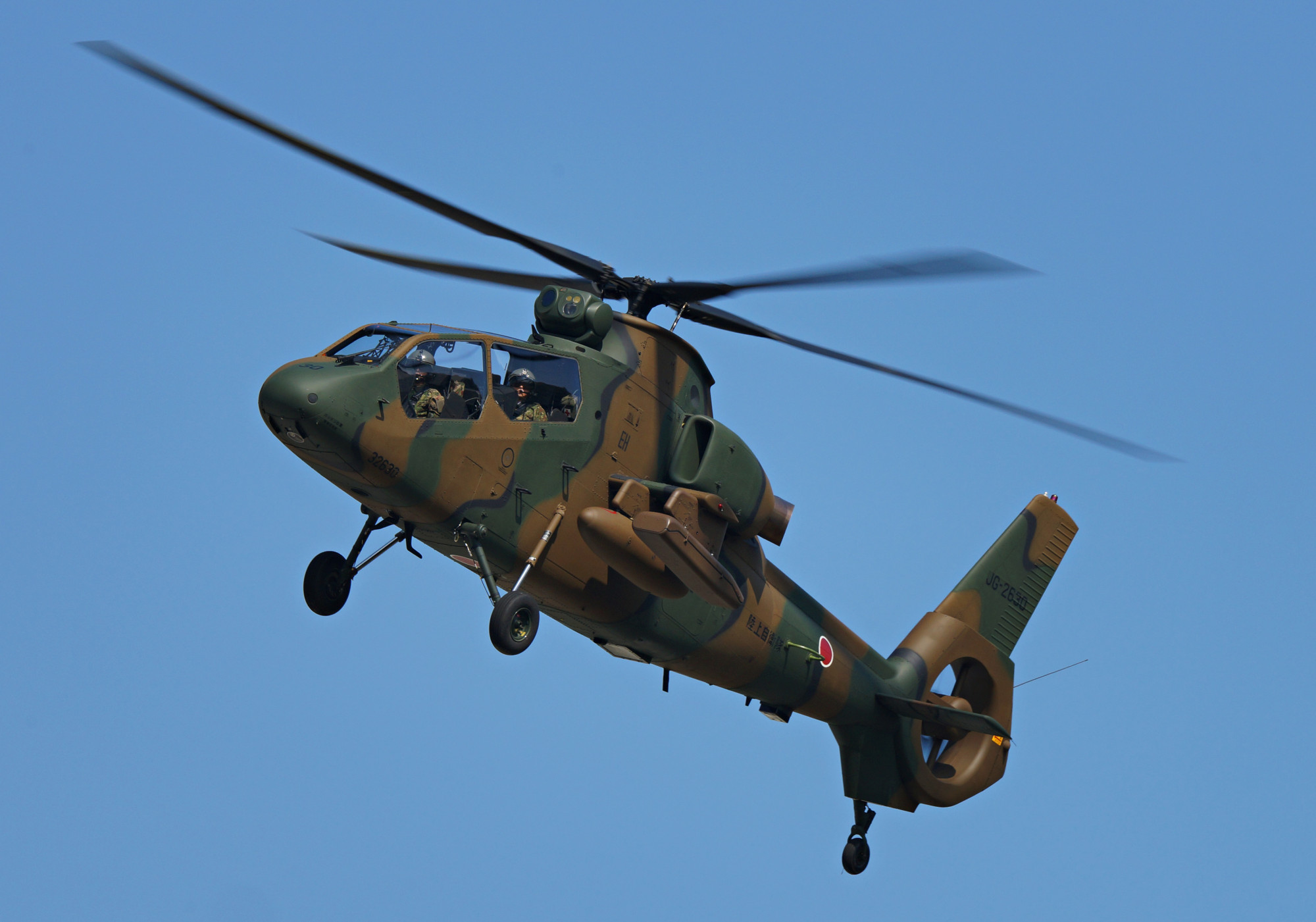Asia's
Only Integrated Showcase for Mobility Innovation Across Air, Land and Sea >
MobilityNews >
Japan considers slashing crewed aircraft numbers in favour of UAVs
Japan considers slashing crewed aircraft numbers in favour of UAVs
Japan considers slashing aircraft numbers in favour of UAVs
INDUSTRY SPOTLIGHT | 27 DECEMBER 2022

Koji Miyake | Only 38 OH-1 reconnaissance helicopters were delivered, and the type may face premature retirement.
The Japan
Self-Defense Force (JSDF) will drastically reduce the number of crewed aircraft
in exchange for introducing UAVs, according to 9 December reports from Yomiuri
Shimbun.
The reports,
believed to be sourced from senior government or military officials, suggest the
Japan Ground Self-Defense Force (JGSDF) will rapidly introduce UAS whilst
cutting AH-64D and AH-1S attack helicopters and OH-1 reconnaissance helicopters.
Only 13 AH-64Ds
are in service with the JGSDF, and the number of AH-1S has reduced from 90 to
47. The service has not proceeded with plans to upgrade helicopters to the AH-64E
configuration or introduce a successor to the AH-64D.
The
introduction of the OH-1 was halted after 38 aircraft, and the OH-6D
reconnaissance helicopter was retired. Time appears to have run out to find
successor attack and reconnaissance helicopters.
Thus far, the JGSDF
has only operated reconnaissance UAVs, including the ScanEagle. The introduction
of attack UAVs is in the planning stages.
The JGSDF has
not done enough research on uncrewed operations to cover all missions that
helicopters used to carry out, so plans for eliminating attack/reconnaissance
helicopters may be too hasty.
The Japan
Maritime Self-Defense Force (JMSDF) will introduce the MQ-9B SeaGuardian, while
P-1 patrol aircraft and SH-60K helicopter numbers will be reduced. The Japan
Coast Guard (JCG) also started operating the MQ-9B in October 2022.
Relations
between the JMSDF and JCG are sometimes strained, but they have shared facilities
and information on the MQ-9B.
The JMSDF plans
to equip the MQ-9B with sonobuoy sensors to support ASW missions. Using the
aircraft in this role may be challenging as the US has only just started
testing these capabilities.
The Japan Air
Self-Defense Force (JASDF) will retire the U-125A search and rescue aircraft. In
future, these duties will be conducted by UH-60J helicopters, and JMSDF will
transfer UH-60Js to the JASDF.
In Japan, UAV
operations have not progressed due to strict legal restrictions, and the JSDF
has been reluctant to introduce uncrewed systems in the past, preventing the emergence
of a leading domestic manufacturer of UAS.
Even if it does
proceed with the reported plans, it will have to rely on foreign-made UAVs.
By: Koji Miyake / Tokyo
Article | Shephard Media
